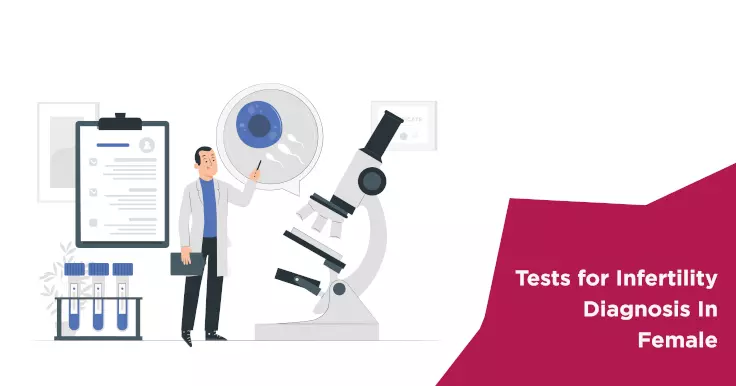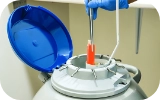Essential Infertility Tests for Female Diagnosis

Infertility is an issue that affects many couples. A woman may be diagnosed as infertile if she is not able to conceive a child for over a year despite having well-timed, unprotected sexual intercourse. The good news is that infertility can be treated. The first step towards fertility treatment is to understand the factors causing infertility. A number of fertility tests may be used to confirm an infertility diagnosis in women.
When testing for infertility, the doctors will first conduct a physical examination of the patient and ask questions to understand her medical history and lifestyle. In addition, one or more of the below tests may be advised:
Blood Test - A blood test is used to check the patient's overall health, to check for HIV and see if there are any underlying infections that could be interfering with fertility. Blood tests are also used to check hormone levels. For this, the blood sample may be taken at various points of time during a menstrual cycle.
BBT Charting - Doctors usually recommended recording your Basal Body Temperature when one is trying to conceive. A rise in BBT indicates ovulation and can be used to determine the best time to have sexual intercourse. This charting can be done at home.
Postcoital Test - A couple may be told to have unprotected sexual intercourse and visit the doctor a few hours later. The doctor will then take a sample of the cervical mucus for testing so as to understand how the sperm cells interact with the cervical mucus. This test is also used to check sperm motility.
Transvaginal (pelvic) Ultrasound Exam - Unlike a normal, external ultrasound, this involves inserting a special device into the vagina. It uses high-frequency sound waves to create an image of the uterus and other reproductive organs on a screen. The doctor can then identify any structural abnormalities, fibroids etc. that may be interfering with pregnancy. This is not painful and is usually conducted 2 weeks before the patient's menstrual period.
Hysterosalpinogram -This is also known as a tubogram or HSG. It is used to check for blockages in the fallopian tubes and defects in the uterus. An HSG is usually performed between the 6th and 13th day of a menstrual cycle. The test involves injecting a liquid dye into the uterus through the vagina. A series of X-ray images are then used to check the progress of the dye through the fallopian tubes. In the case of an obstruction or blockage, the dye will not be able to pass through.
Hysteroscopy - This is usually advised only if an obstruction is seen in the Hysterosalpinogram along with laparoscope. A Hysteroscopy involves inserting a thin, flexible telescope like device through the vagina into the uterus. This device allows the doctors to see the insides of the uterus and check for structural problems.
It is not important for all of the above tests to be conducted. In some cases, even after testing, there may be no identifiable cause of infertility.
 Infertility Counselling
Infertility Counselling Female Infertility Treatment
Female Infertility Treatment Andrology Treatment
Andrology Treatment Fertility Enhancing Surgeries - Female
Fertility Enhancing Surgeries - Female Fertility Enhancing Surgeries - Male
Fertility Enhancing Surgeries - Male Endoscopy Treatment
Endoscopy Treatment IUI Treatment
IUI Treatment IVF Treatment
IVF Treatment ICSI Treatment
ICSI Treatment Advanced IVF Solutions
Advanced IVF Solutions Embryology
Embryology Vitrification Egg, Embryo, Sperm Freezing
Vitrification Egg, Embryo, Sperm Freezing Preimplantation Genetic Testing (PGT)
Preimplantation Genetic Testing (PGT) Donation Program Embryo / Egg / Sperm
Donation Program Embryo / Egg / Sperm












